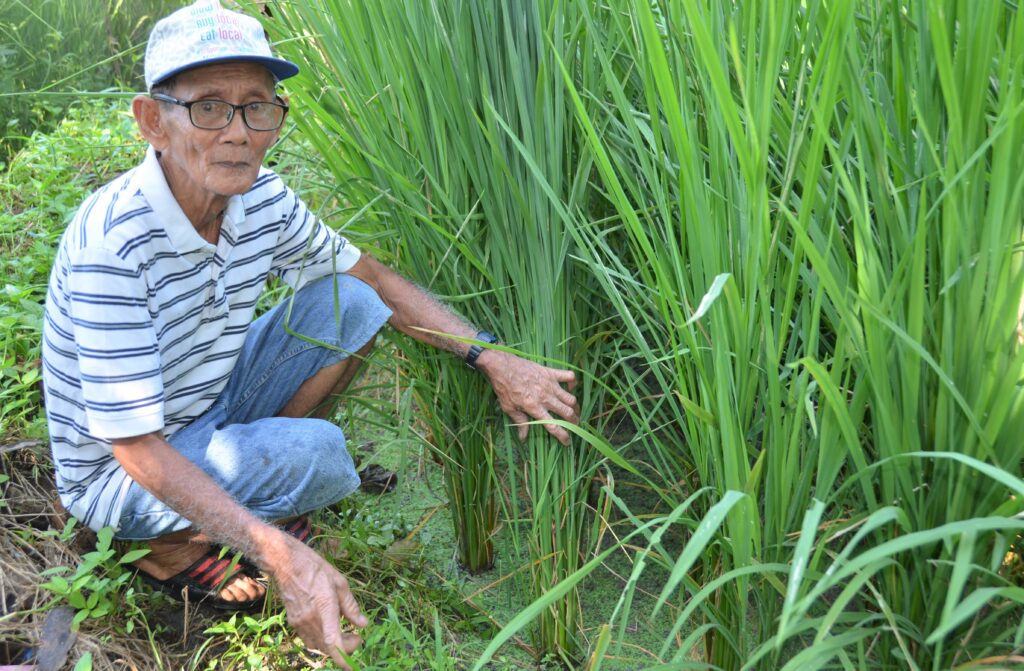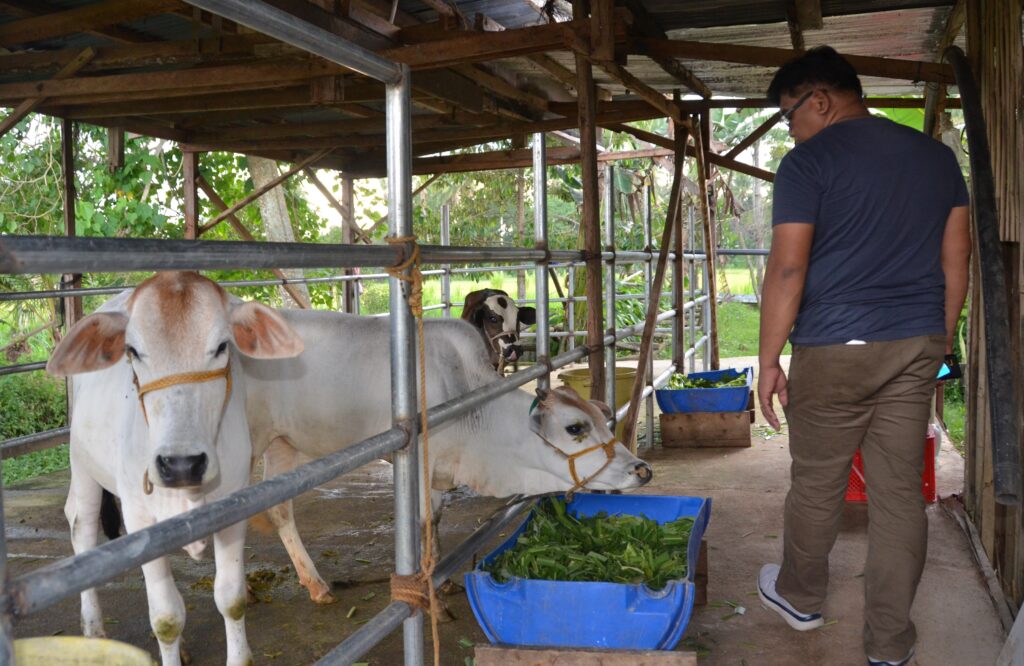Text and Photos by Henrylito D. Tacio
In The Weather Makers: How Man is Changing the Climate and What It Means for Life on Earth, Tim Flannery wrote: “One of the biggest obstacles to making a start on climate change is that it becomes a cliché before it has been understood.”
But climate change is for real. In fact, the signs are already here: stronger typhoons, too hot for comfort, flooding in various parts of the country, sea level rise, and droughts. Is someone still doubting?
“Climate change is the biggest environmental issue because it threatens to be disastrous. It will not only directly affect our climate. It will severely affect human beings and the ecosystems. We will have millions of people suffering from it,” said Geird Leipold, international executive director of Greenpeace.
Scientists claim climate change is caused by an increase in the amount of greenhouse gases (GHGs) spewed into the atmosphere through human activities. GHGs refer to carbon dioxide, methane, and other industrial gases.
According to the Nobel-prize winning Intergovernmental Panel on Climate Change (IPCC), the amount of carbon dioxide – touted as the primary culprit – in the atmosphere has increased by 30% in the past 200 years. Most of these emissions came from burning fossil fuels, such as coal and oil and roughly from the destruction of tropical rainforests.
Filipinos who want to help reduce emissions of carbon dioxide and other GHGs in the atmosphere can do it by cutting down on meat consumption.
“Part of climate-change mitigation is the promotion of a low-carbon lifestyle,” explained Senator Loren Legarda, a climate change champion. “Since meat produces more greenhouse gases, eating lower on the food pyramid is advised, which means less meat and more whole grains, fruits and vegetables.”
The United Nations Food and Agriculture Organization (FAO) said 14.5% of man-made GHGs emissions come from global livestock. The FAO estimates that 70% of former forests have been lost and converted for animal grazing.
Meat consumption and demand
“Beef consumption is growing,” said the Global Food Policy Report. The world beef market size was valued at $467.7 billion in 2021 and is expected to progress at a compound annual growth rate of 4.8% from 2022 to 2030.
Global consumption of beef is projected to increase by 0.75% annually between 2022 and 2025 through a combination of both income and population growth, primarily in Asia. In the Philippines, the proliferation of fast foods has contributed to the increase.
The demand for chicken meat among Filipinos is faster than other meats – as expansion of fast-food outlets continues. For the first quarter of 2022, for instance, chicken meat production increased by 13% year-on-year.
But pork is still the most saleable meat in the Philippines. In 2021, the per capita consumption of pork in the country was at 10.66 kilograms, slightly lower than that of the previous year. But the forecast said it will continue to increase by 3.6 kilograms per capita within the next few years, with estimated consumption of about 14.25 kilograms per capita in 2031, Statista reports.
Around the world, “the production of meat has doubled in 30 years from 1988 to 2018 and increased four-fold since the mid-1960s,” said the website of The World Counts. “And production is expected to continue to grow.”
Bad for the environment
Economically, it is good news. But it’s bad news for the environment. “Meat production puts immense pressure on earth’s ecosystems,” The World Counts points out. “And global meat consumption is increasing non-stop.”
Cattle growing, for instance, is one of the most resource-intensive and environmentally impactful foods to produce. “Beef production requires four times more land (and four times as much greenhouse gas emissions) than dairy for every unit of protein consumed,” said the global food policy report. “In addition, beef is seven times more resource-intensive than pork and poultry, and 20 times more than pulses.”
Damian Carrington, writing for The Guardian, agrees. “The popular red meat requires 28 times more land to produce than pork or chicken, 11 times more water and results in five times more climate-warming emissions.
Beef is one example of red meat. It also includes veal, lamb, mutton, pork, chevon and venison. It doesn’t include chicken, turkey, goose, duck, and rabbit. Processed meat include ham, sausage, hot dogs, pepperoni, beef jerky, and deli meats (including roast beef and turkey).
“When compared to staples like potatoes, wheat, and rice, the impact of beef per calorie is even more extreme, requiring 160 times more land and producing 11 times more greenhouse gases.”
What about rice?
Despite rising per capita income that has led to a more diversified diet in neighboring Asian countries, rice remains the staple food of Filipinos. Studies have shown that for every peso spent on food, 20 centavos go to rice.
“If we did not have rice, our deepest comfort food, we would probably feel less Filipino,” the late food columnist Doreen Fernandez once said.
According to the Bureau of Agricultural Statistics, Filipinos spend more on rice than any other food. A survey conducted by the line agency of the Department of Agriculture showed that Filipinos, especially those from low-income households, are depending solely on rice more than ever for their daily dietary energy supply and dietary protein because it remains the most affordable food in the country.
The Philippines is the seventh producer of rice in the world; the top six are China, India, Indonesia, Thailand, Bangladesh, and Vietnam. Below the Philippines are Brazil, Myanmar, Pakistan, Japan, and Cambodia. All these, except for Brazil, are from Asia.
Unfortunately, the Philippines is also among the top consumers of rice. In fact, it is ranked no. 6 – just below China, India, Bangladesh, Indonesia and Vietnam. Below the Philippines are Thailand, Myanmar, Japan and Nigeria.
Growing rice is not environment-friendly. “Rice is a plant that grows best in wet soil, with its roots flooded,” explains L. Hartwell Allen, an American soil scientist at the Crops Genetics and Environmental Research Unit in Gainesville, Florida. “But flooded rice emits substantial amounts of methane to the atmosphere.”
Studies conducted by the International Rice Research Institute (IRRI) showed that for every 4 tons of rice grain (palay), about 6 million tons of rice straw (dayami) are also produced. In the Philippines alone, about 11.3 million tons of rice straw are produced.
Based on the five-year study (from 2006 to 2010), it was found that incorporating stubble less than 30 days before crop establishment is responsible for the largest contribution of methane emissions.
Burning rice straw is also not advisable as it causes air pollution since the smoke produces carbon dioxide, carbon monoxide, nitrogen oxide, and sulfur oxide. Most of these are also classified as GHGs.
Eating less meat
Think globally, act locally, experts advise. Some scientists believe that eating less meat would be a better way for people to cut carbon emissions than giving up their cars. Or, as Prof. Mark Sutton, of the UK’s Centre for Ecology and Hydrology, puts it: “Avoid excessive meat consumption, especially beef, is good for the environment.”
Eating less meat is not only good for the environment but also for your health. “Meat is high in saturated fat and may cause colon, breast, and prostate cancer,” said Dr. T. Colin Campbell, co-chairman of the World Cancer Research Fund. “In my view, no chemical carcinogen is nearly as important in causing human cancer as animal protein.”
From time to time, the country faces rice shortages. But this problem can be solved partly by eating less rice.
Rice is rich in carbohydrates and provides enough energy to the body and aids in the normal functioning of the brain. But on the other hand, rice contains a high quantity of starch and if you consume too much of it may increase diabetes. Another study showed that eating rice is just as bad for your heart as eating too much sugar.
Eating less rice, therefore, does more good than harm. There will also be less emissions of methane into the atmosphere. But more importantly, the Philippines will stop importing rice from other countries.
Meanwhile, “Agriculture is extremely vulnerable to climate change,” said the Washington, D.C.-based International Food Policy Research Institute. “Higher temperatures eventually reduce yields of desirable crops while encouraging weed and pest proliferation. Changes in precipitation patterns increase the likelihood of short-run crop failures and long-run production declines.” – ###
Photo captions:
1) Raising cattle is one of the reasons why trees are being cut as these forests were converted into grazing areas.
2) More Filipinos are raising pigs in their backyards.
3) Rice is the staple food of Filipinos so much so more farmers are growing them.




